Disclosure: We may get commissions for purchases made through links in this post.
Are you planning to compact your flagstone pavers, but you don't know if it is allowed to use a plate compactor or not? Worry not because we've got this covered! During our research, we have run into a few tips from homeowners on using a plate compactor on flagstones.
Yes, you can use a plate compactor on flagstones. Bear in mind these materials you can incorporate with a plate compactor to compact your flagstones properly and avoid breaking them, such as:
- Silicone pad
- Thin plywood
- Doormat, rubberized mat, or scrap carpet piece
- Layered cardboard
There are still many things you should know about, especially concerning the just of flagstones, so we encourage you to finish reading this article. Plus, we might be able to answer some of the additional questions running through your mind as you read. So, without further ado, let's delve into the details!
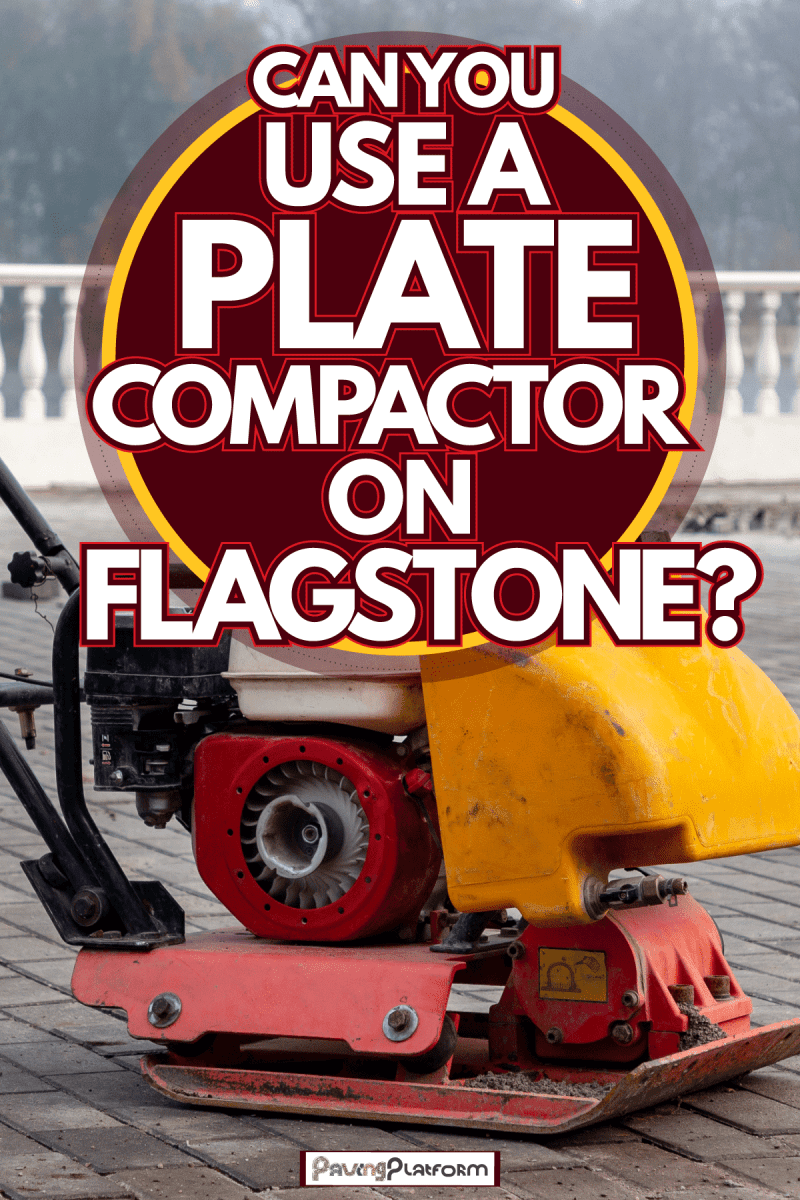
How To Use A Plate Compactor On Flagstone?
To utilize the plate compactor for your flagstones correctly, you can soften the blow by using any of the following materials. These softer backings protect the stone surface while the compactor vigorously works.
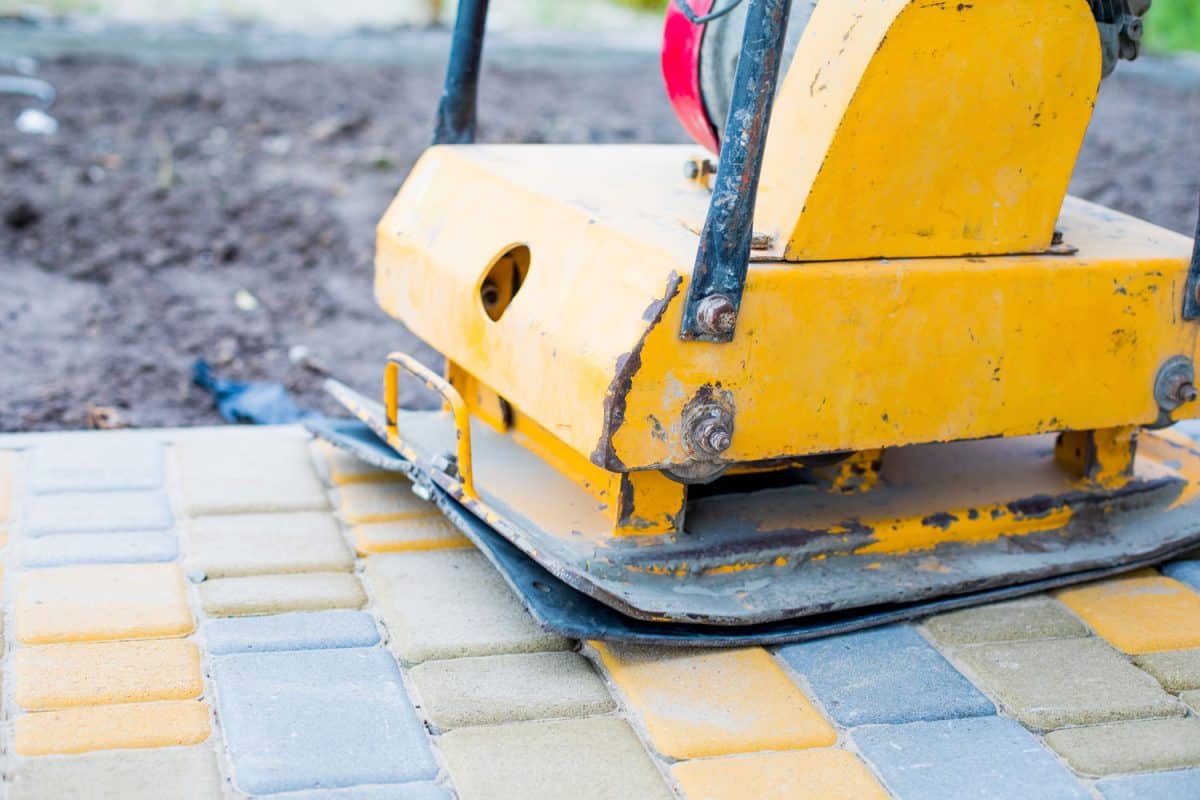
Use A Silicone Pad
You can use a plate compactor on your flagstone, but you must attach a silicone pad underneath it. However, one thing to keep in mind is the thickness of your flagstones. If you think they cannot handle the compaction, we suggest not doing it.
Use A Thin Plywood
You can utilize plywood if you want to plate compact your flagstones. Of course, just like a silicone pad, you should also put the plywood underneath the plate compactor. Doing it this way will prevent your flagstones from cracking.
Make Use Of Your Doormat Or Rubber Mat
Another alternative that you can use underneath a plate compactor is a doormat. It will excellently work since it will not scrape the surface of your flagstones. Furthermore, if you don't have any doormat available, you can use your old carpet.
A Couple Of Cardboard Layers
You read it right! It is wise to use cardboard as a material to put underneath a plate compactor. You can fold the cardboard along the plate compactor's front and back edges and use duct tape to fasten it securely.
How To Lay A Flagstone Patio
If you plan to accomplish a do-it-yourself flagstone patio, this guide will help you achieve an excellent patio result. But before anything else, please prepare the following:
Tools
- Hand tamper or plate compactor
- Small sledgehammer
- Tape measure
- Shovel
- Rake
- Carpenter's level
- Broom
- 8 Stakes
- Garden hose
- Line level
- Mason's line
Materials
- Any gap filler material you prefer
- Long and straight 2x4 board
- Compactible gravel
- Stone dust
- Flagstone
1. Mark The Edges Of The Patio
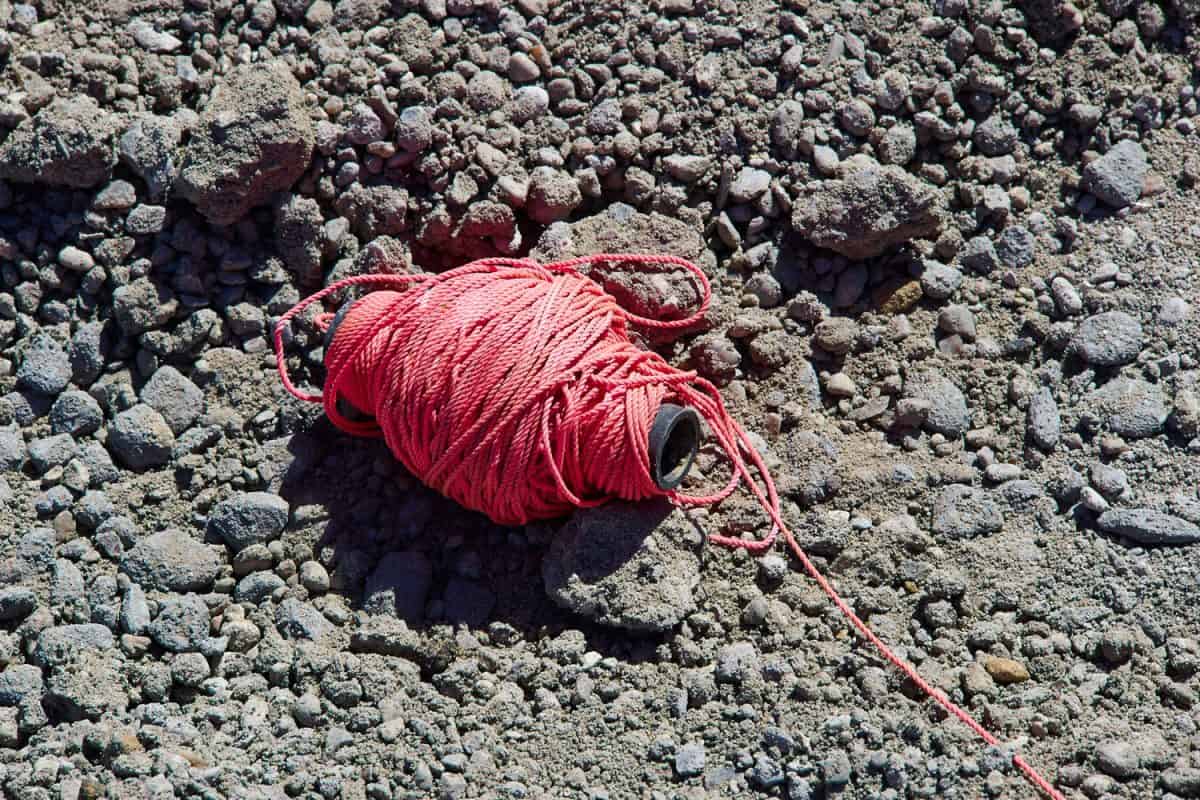
Use the mason's line to set up the patio's perimeter for your installation. Put two stakes per corner, about two feet past the sides of the perimeter.
Next, you will connect the mason's line to both opposing pairs of stakes to produce a square or rectangular layout. Take note that if the patio you are planning is circular, you should use a square layout. The points where the strings cross will illustrate the corners of the flagstone patio area, and that is a total of four strings.
Creating this layout is essential to allow you to prepare the whole patio without moving the stakes and to know what area to excavate.
Check this mason's line on Amazon.
2. Square Up The Layout
Measure the layout diagonally between opposing corners (where the strings encounter) to confirm whether it is a square layout. You can confirm that it is square when the diagonal dimensions are equal. And if in case the measurements are unequal, you can adjust the alignment of the stakes.
3. Incline The Layout Strings
Slope and level the strings according to the position of the patio. The surface of your patio should be even from side to side -it's usually parallel to your house. It must be sloping down and away from the house at two inches per 10 linear feet.
For instance, if your patio is 10 feet long, it should be two inches more elevated at the house end than at the opposing end. It will help ensure that water will drain away from the surface.
4. Excavate The Patio
Pull and clear all the grass and other foliage in your patio area. Then excavate the area with a depth of six inches plus the thickness of the flagstone patio you will install. So, if you have an inch thick flagstone, you will need to excavate a soil of seven inches in depth. However, you can lessen your soil excavation if you want your flagstones to lie higher than the patio ground.
Furthermore, make sure that the ground is level on each side when excavating. And remember to tamp the soil with your plate compactor or a hand tamper.
Check out this plate compactor on Amazon.
5. Place The Gravel Base
Incorporate two inches of gravel over your patio area. Rake and tamp it thoroughly to have smooth and level gravel. Put another two inches of gravel and do the same tamping step. Measure down from the strings to evaluate the thickness of the gravel and maintain the proper slope, just like you did with the excavation.
6. Add The Stone Dust
You must add two inches of stone dust over the gravel base, rake it smooth, and level it side to side. Tamp it correctly and thoroughly as much as possible. Lastly, remove all the mason's lines and stakes.
7. Arrange The Stones
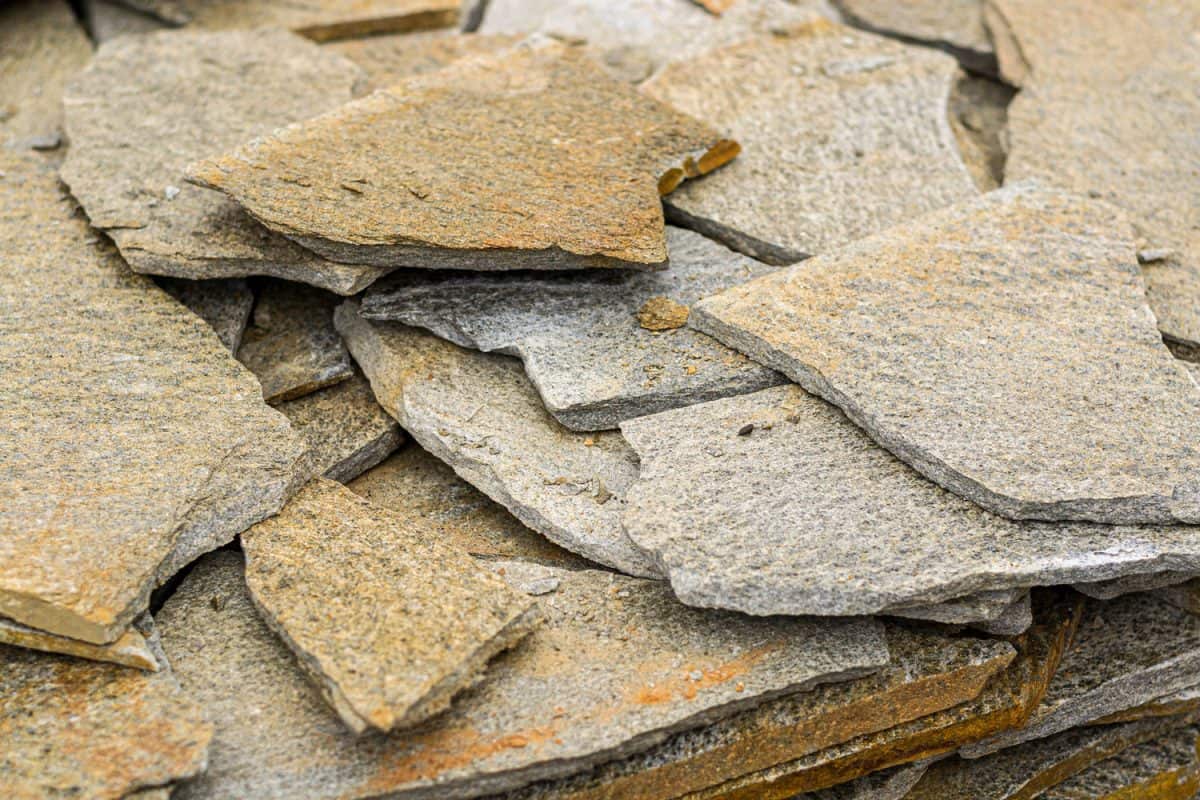
Pile up the stones you will use for the flagstone patio surface on a flat area. Arrange them by shape and size so you can choose and pick them easier later as you place them on the patio.
8. Place And Lay The Patio Stones
Lay the flagstones into the dust stone surface. Start at one end and work towards the other. Position the stones as close as you desire, and you will fill in the gaps later with gravel, sand, grass, soil, or any filler you want to use.
9. Level The Flagtones
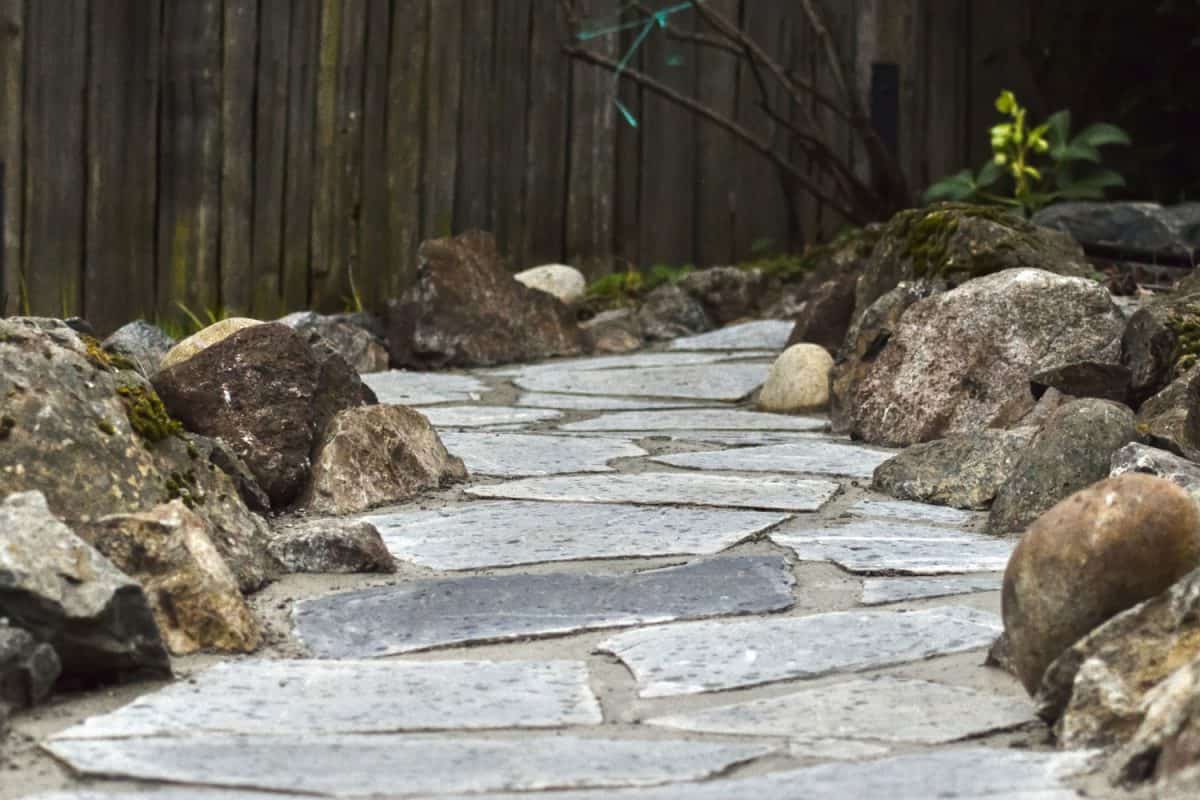
In this step, you must level each stone. You can either remove or add stone dust underneath the flagstones. You should provide a stable level for each stone to have a uniform height. Also, stone edges can create tripping hazards when they stick up.
10. Fill In The Gaps
Choose any filler material to fill in the gaps between your flagstones. Use a broom to sweep the material evenly into the gaps. And spray the patio using a garden hose to wet and let the filler settle into the spaces. We suggest you do a second run in sweeping more filler to ensure locking the gaps properly. Alternatively, you can choose grass to cover the gaps between your flagstones.
How To Level Uneven Flagstones
A rubber mallet is a primary and highly recommended tool for leveling uneven flagstones. As you are setting each stone, you should level it with some loose gravel to ensure that the flagstone is getting complete support on its base.
What Materials To Put Between Flagstones
If you are looking for gap fillers between your flagstones, you can check the list below and choose what suits your taste.
Polymeric Sand
This filler option may probably be the best if you have flagstones with irregular shapes. Polymeric sand is specially made to withstand erosion, keep the pests away, and reduce weed growth from your flagstone patio.
Mulch
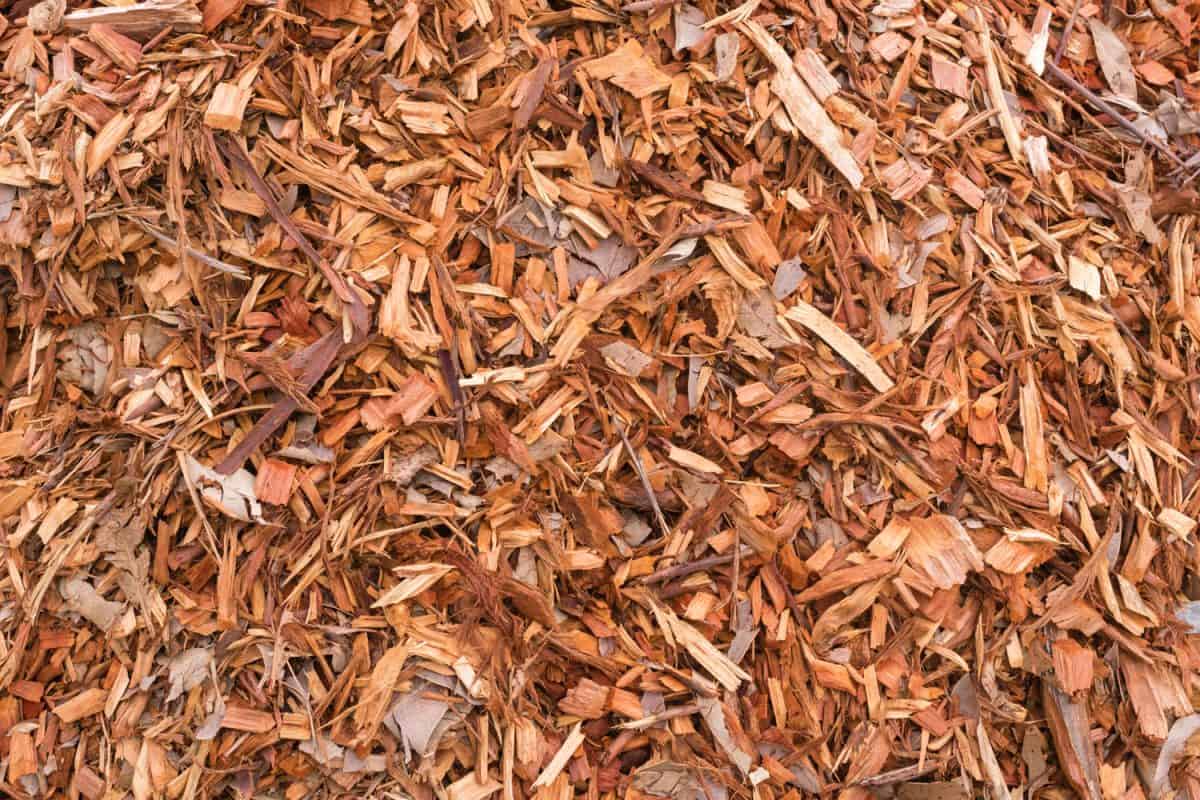
This landscaping material is somewhat common for most homeowners because of the attractive touch to their flagstone patios. The dark color of mulch gives life to the pale color of flagstones. Appearance-wise, mulch and flagstones complement each other perfectly. And in addition to its benefit, this gap filler suppresses pest infestation and weed growth.
Plants
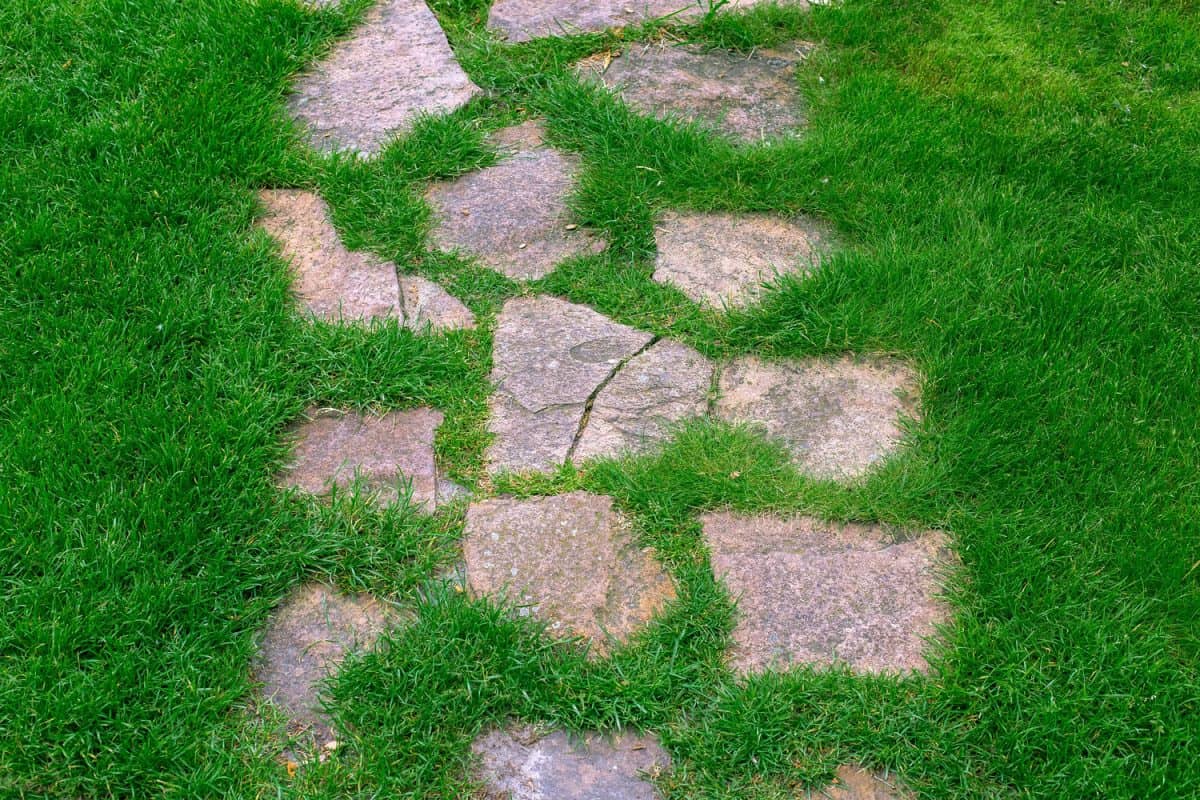
It is also wise to use ground cover plants to fill between your flagstone patio. Those plants include turf or moss. These ground cover plants also add attractiveness and color to the entire landscape. If you have a flagstone patio with large stones spacing far apart, we recommend using turf since it suits them best.
Sand
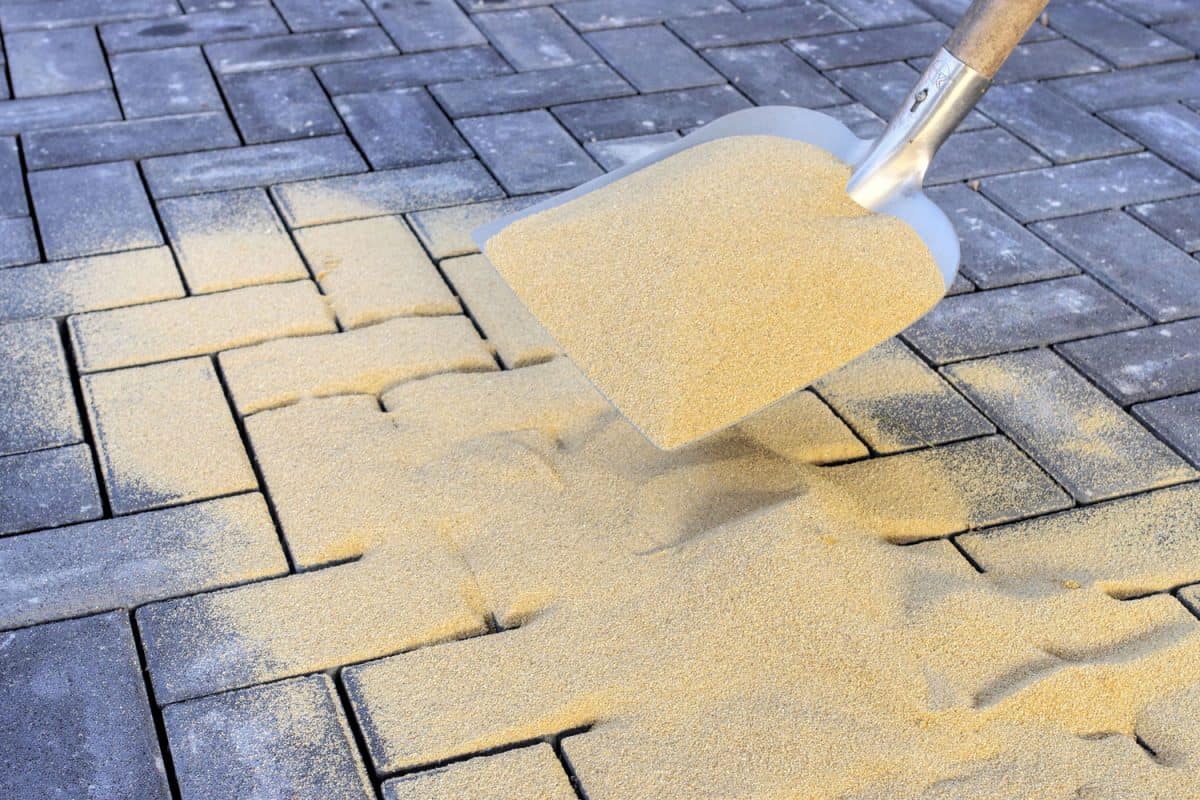
Sand is a very common filler for flagstone patios. Although mainly used, keep in mind that you will need to refill the gaps as the sand will erode from time to time.
Rocks
Rocks are a functional material for flagstone patios as a gap filler. Aside from being aesthetically pleasing, you can use them to suppress weed growth and pest infestations. You can choose between gravel, crushed gravel, and small stones. However, there is only one drawback of rocks: they don't add any color to the flagstone patio, leaving it monotone.
In Summary
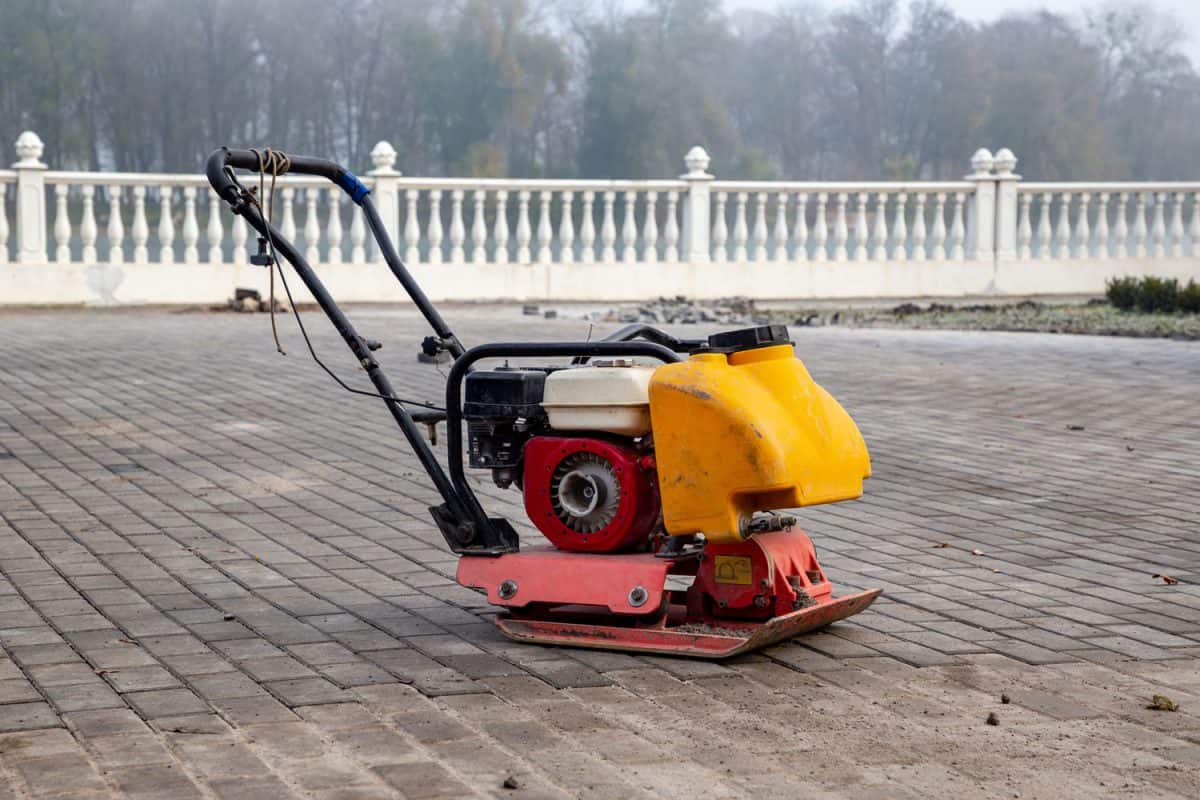
The two keys to consider in using a plate compactor on flagstones are the material to put underneath the plate and the thickness of the flagstone you will compact. Using the plate compactor properly will help you achieve an excellent patio result.
You can read more of our articles for help and further information about landscaping and hardscaping.
Can You Lay Flagstone On Dirt? [With Tips For Laying On Uneven Ground]



![Vibrant Red Paver Stone Path, Can You Spray Paver Sealer? [How To Apply It]](https://pavingplatform.com/wp-content/uploads/2022/04/Vibrant-Red-Paver-Stone-Path-600x400.jpg)
![Properly laid out red pavers for a garden, Can You Tint Paver Sealer? [And How To]](https://pavingplatform.com/wp-content/uploads/2022/04/Properly-laid-out-red-pavers-for-a-garden-600x400.jpg)
